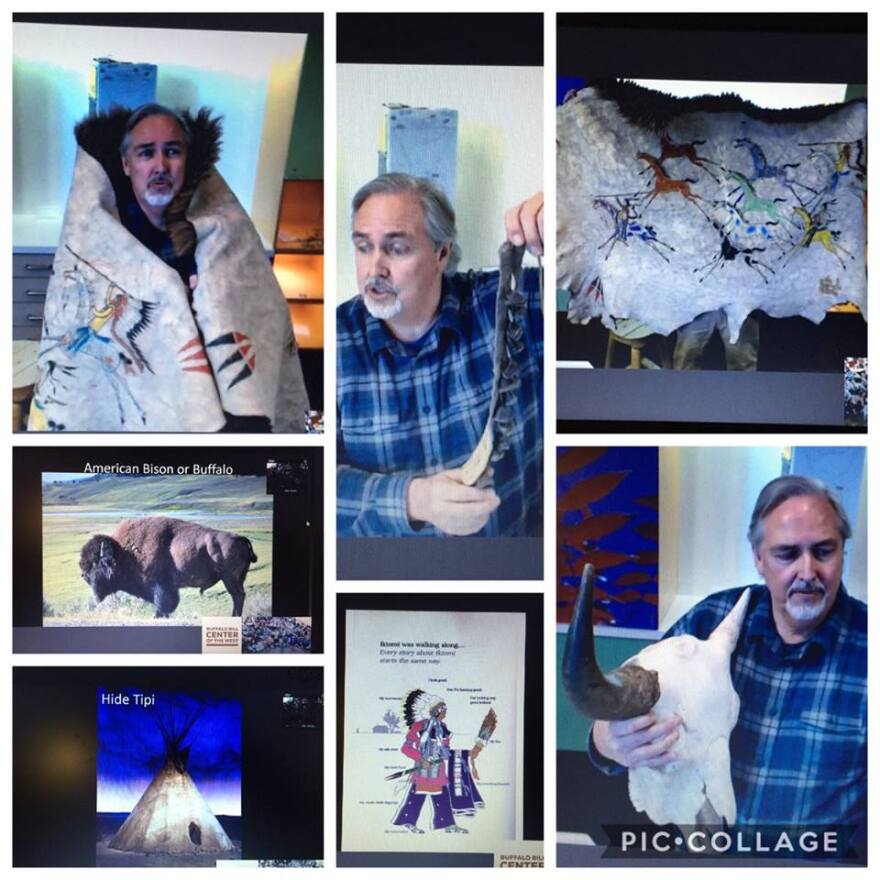Teachers and educators globally are beginning to incorporate technology more in their classrooms. Microsoft’s Skype in the Classroom breaks the walls of classrooms, allowing students to take virtual field trips to museums, zoos, and other institutions. One of the facilities is the Buffalo Bill Center of the West in Cody. The museum has situated itself to be one of the program’s most prolific partners.
George Miller, an outreach educator for the Center of the West in Cody, waved hello to a classroom full of seven to nine-year-olds. The kids cheerfully replied. But this isn’t a normal lesson. The kids and Miller are not in the same place. They’re looking at each other through a screen using Skype. Without a second thought, Miller dived right into the lesson.
“We got some very interesting people who live near us here in Cody, Wyoming,” said Miller. “And they’re called American Indians or Native Americans. Have you guys been studying Native Americans?”
The kids replied with an energetic, “Yea!”
The Plains Indians lesson is one out of four Skype lessons the Center offers. The others include a lesson on Western art, on animal adaptations, and on men of the Mountain West and this lesson. All of these lessons are based off of the resources of the museum.
For Julie Haden, a first-grade teacher from St. Johns County, Florida, the Center of the West’s lesson on the Plains Indians people fit right into her Native American curriculum. By searching on Skype in the Classroom website, she tried to find subjects, which would appeal to her students but also fit into the standards.
Even though six to seven year old’s have a short attention span, they’re intrigued by the Skype lessons and are able to fully pay attention for 20 to 25 minutes, Haden said. But the best part for the kids is that they’re able to talk and ask questions to people far away.
Back at the Center, Miller wrapped a bison blanket around himself leaving only his head visible. The children were memorized by the sheer size of the hide.
And the excitement rings true for most students. In just five years, the center has taught lessons to students in Wyoming, 49 other states, and 31 countries. They’ve connected with over 100,000 students ranging from Kindergarten to high schoolers. In order to reach this number, the Center teaches seven to eight Skype lessons daily.
The museum, located in northwest Wyoming, can only reach around 4,500 to 5,000 students onsite. Megan Smith, a digital learning specialist, said students can’t physically come to the museum in the winter because of the weather so they started participating in Skype in the Classroom so to impact more students. is basically means they teach 7 to 8 classes daily.
Transportation and admission to museums have been the first to be cut out of school budgets, so Smith said Skype in the Classroom is another way to expose students to those resources they’d be missing otherwise.
“Skype in the Classroom across the board offers teachers a way to open those doors for students without having to actually get them into the museum,” said Smith.
Challenges persist for teaching over Skype. Over the computer, students can’t walk around the museum and interact with objects up close.
“We get them really close to that camera on the Skype board and the animals in the Draper [natural history museum] but they aren't able to manipulate it and hold it and learn from it that way,” said Smith. “But the experience is still there they're participating.”
In fact, George Miller, the outreach educator, actually believes the kids' focus is better on Skype than onsite.
“In some ways, I feel that the attention can be even more focused by Skype then it is when they're here. When you're focused in on it, like in an electronic way it's almost like you're watching TV or you’re on the internet and the kids respond really well to that.”
With each lesson, the Center reaches out to another dozen or so students.









